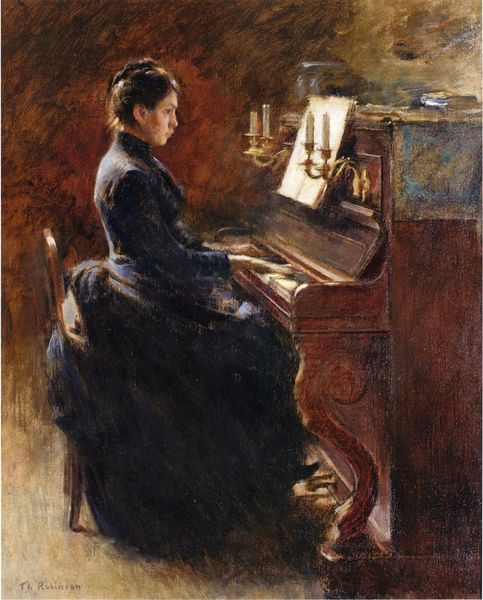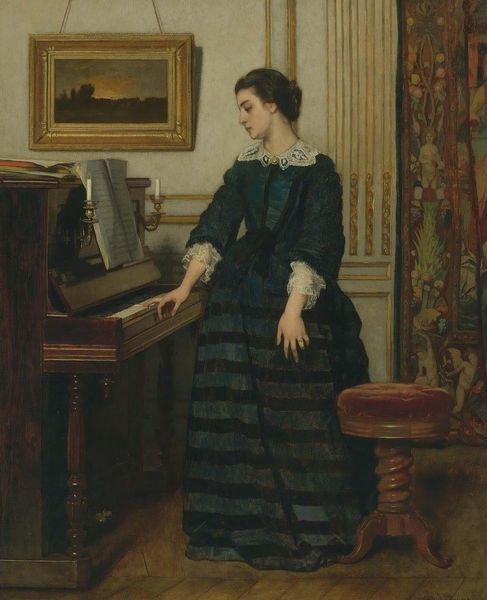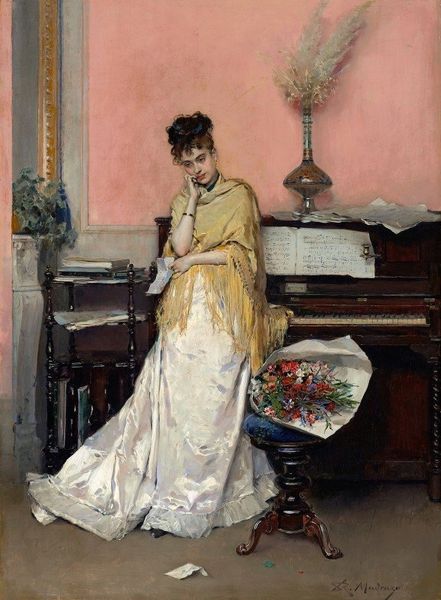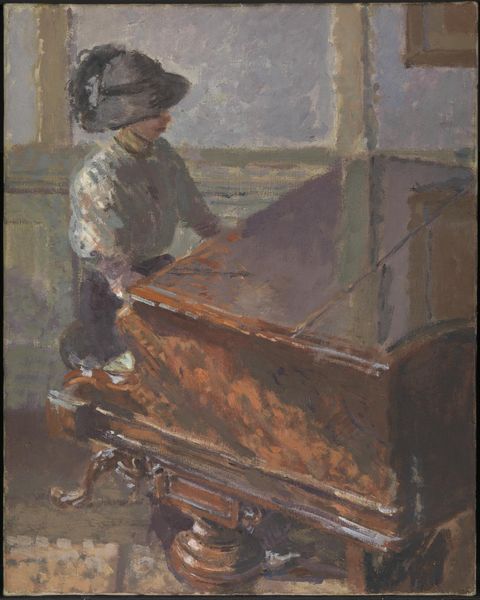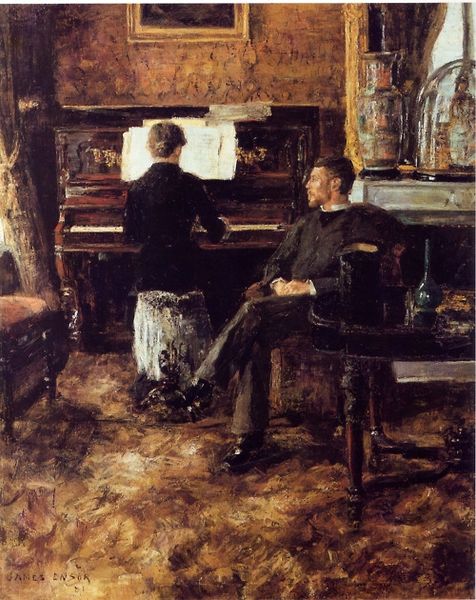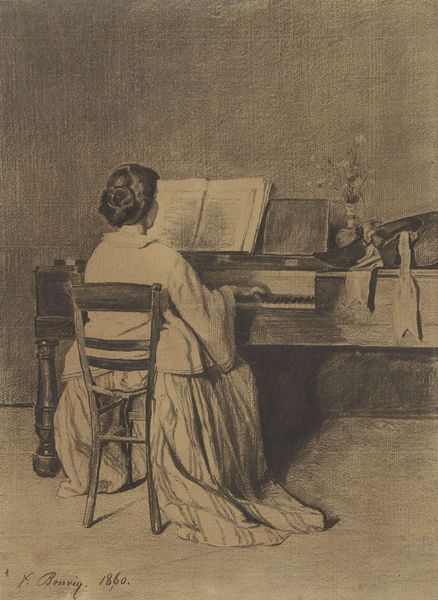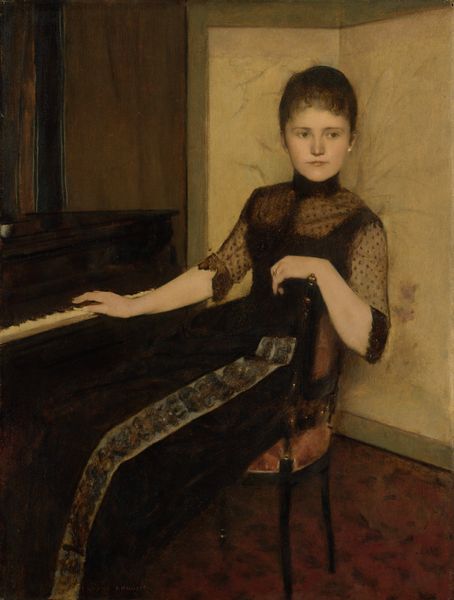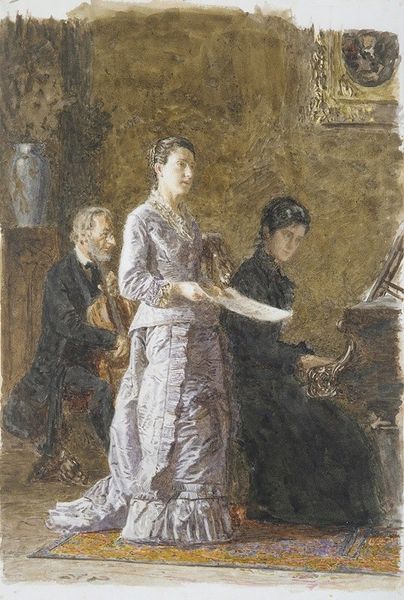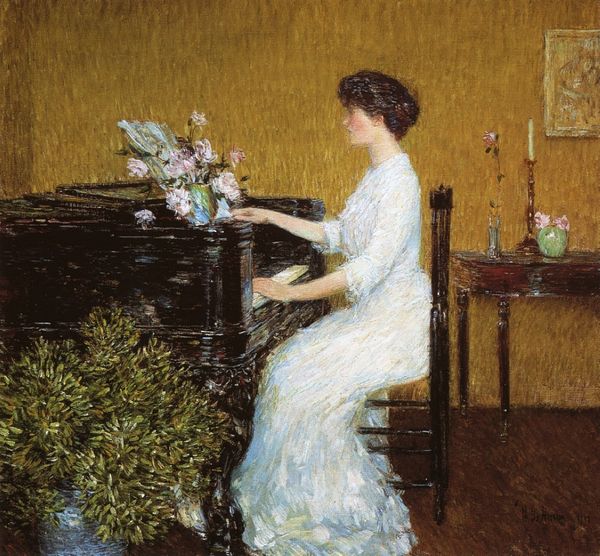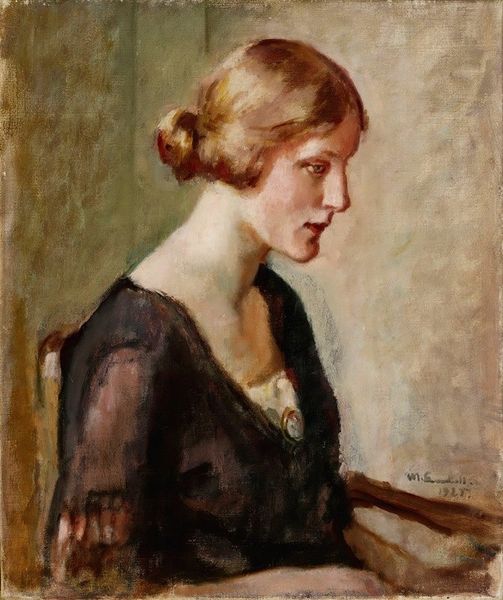
Dimensions: 38 x 46.5 cm
Copyright: Public domain
Editor: This is "Madame Manet at the Piano," painted by Édouard Manet in 1868 using oil paints. The muted colors create a very intimate, almost somber mood. What symbols are at play here? Curator: The image speaks volumes about domesticity and leisure within a specific social stratum. The piano, prominently featured, signifies cultured accomplishment, especially for women of that era. Consider how her dark dress contrasts with the gilded clock and ornate décor behind her. What feeling does that give you? Editor: I guess a kind of restraint, maybe? Like she's contained within these boundaries, but there is wealth and privilege present, too. Curator: Precisely. The piano wasn't just an instrument; it was a signifier of social standing, almost a scepter of domestic power. Notice too, how Manet captures his wife in profile. Do you see any echoes of earlier portrait traditions in that choice? Editor: Well, the profile view feels very classical, like Roman emperors on coins, maybe? But with less… grandeur. Curator: Yes, that’s interesting. Perhaps Manet is subtly playing with notions of idealized beauty versus a more intimate, truthful portrayal. Her engagement with the piano suggests not just a skill, but also a kind of emotional outlet, a socially acceptable performance of inner life. What do you think the blank canvases in the background might signify? Editor: Hmmm…maybe the unspoken or unseen creative work, maybe? Or other avenues she wasn’t afforded? Curator: It is this type of ambiguity, isn’t it, that keeps us pondering the narrative suggested through objects, attire and setting and of course, our perspective as well. Editor: I see so much more complexity now, it’s more than just a portrait, it's like a glimpse into a whole world!
Comments
No comments
Be the first to comment and join the conversation on the ultimate creative platform.
